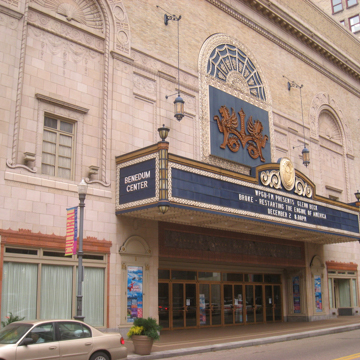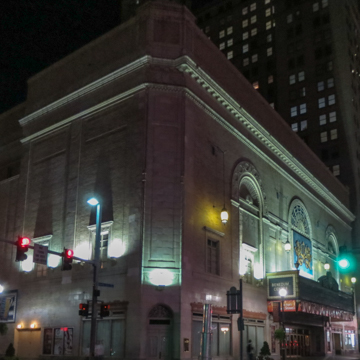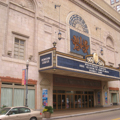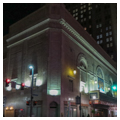You are here
Benedum Center for the Performing Arts
The Pittsburgh Cultural Trust was born in the 1980s with the goal of weaning eight central blocks of downtown Pittsburgh from pornography to high culture. The blocks were demarcated by the Convention Center (AL15) and Liberty Center on the east, Gateway Center (AL7) on the west, the Allegheny riverfront on the north, and Liberty Avenue on the south. The success of this transformation was almost immediate in terms of infrastructure improvements (sidewalks, signage, and lighting), facade restoration, and the new audience that was attracted downtown. The area's two theaters—the Penn, now Heinz Hall (AL11), and this, the Stanley—had declined along with their surroundings.
The Stanley (now the Benedum), the third largest theater in the country when built, was renovated as a performance space for the Pittsburgh Opera, Pittsburgh Ballet, Civic Light Opera, and Dance Council. To accommodate these arts groups, a new six-story backstage was added, which also includes two rehearsal halls. The old Stanley's exterior of off-white terra-cotta and brick was restored to its original appearance.
Writing Credits
If SAH Archipedia has been useful to you, please consider supporting it.
SAH Archipedia tells the story of the United States through its buildings, landscapes, and cities. This freely available resource empowers the public with authoritative knowledge that deepens their understanding and appreciation of the built environment. But the Society of Architectural Historians, which created SAH Archipedia with University of Virginia Press, needs your support to maintain the high-caliber research, writing, photography, cartography, editing, design, and programming that make SAH Archipedia a trusted online resource available to all who value the history of place, heritage tourism, and learning.





